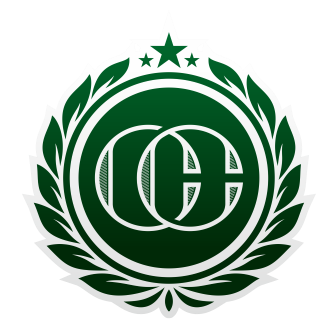Glossary
Heard some coin lingo that you're unfamiliar with?
-
Bag Mark
Marks and scratches from coins rubbing against each other while they're inside the bags from the Mint they're delivered in.
-
Blank
Disk of metal that the coin will be stamped into, also called a planchet.
-
Bullion
Precious metals in the form of ingots, coins, plates, or bars. (gold, silver, and platinum)
-
Business Strike
A coin that is struck specifically for everyday use in commerce.
-
Bust
A portrait, usually the head neck and shoulders of the person on the coin.
-
Cameo
A coin that has a significant contrast between the field and the design. A mirror-like finish. Most often on proof coins.
-
Circulated
Describes a coin that has wear, usually a coin that's been used in everyday commerce.
-
Clad
Multiple layers of metal in a coin, usually a copper core, a nickel-copper alloy on the outside.
-
Coin
A flat, round piece of metal, usually with an official design stamped into it, used as money.
-
Commemorative
Coins that are issued to commemorate a particular person, place, or event. Usually have a distinct design related to the event.
-
Condition
Used to describe the wear on a coin
-
Counterfeit
A fake. A coin that is made by someone to look like an authentic coin.
-
Currency
Money that is used as a medium of exchange. e.g. The U.S one dollar bill is currency.
-
Denomination
The face value of a coin, or paper money.
-
Device
The design element on a coin, such as a bust, portrait, or other images.
-
Die
Two metal stamps used to press images into coins.
-
Doubled-Die
Refers to a duplication of design on a die, due to misalignment.
-
Engraver
Someone who cuts and/or designs words and images on metal for the coins.
-
Error
A coin that has one or more mistakes on it, such as a missing mintmark.
-
Face value
The worth of a denomination. Such as a quarter's face value is .25 cents.
-
Field
The blank area behind the device or design on a coin.
-
Grade
Used to describe the condition of a coin.
-
Incuse
An impression hammered or stamped into a coin so that the design is lower than than the rest of the surface. Opposite of relief.
-
Ingot
A block of gold, silver, or any other precious metal. Used to melt down and make into coins.
-
Inscription
The words inscribed on the coin.
-
Intrinsic Value
Also known as melt value, this is the value of the metal in the coin.
-
Key Date
This refers to a given date in a set of coins that is much more difficult to obtain than the other dates. Usually what collectors are after.
-
Legend
The curverd words that appear around the edge of a coin.
-
Medal
A round metal disk with a design or an inscription, used to commemorate an event or person.
-
Melt Value
Also known as intrinsic value, this is the value of the metal in a coin if it were melted down.
-
Mint
The primary producer of a country's coin currency. The U.S. currently has Mints in Philadelphia, Denver, San Francisco, and West Point.
-
Mint State
Refers to a coin that has not been circulated, it's in the same condition it was when it was first released from the Mint.
-
Mintage
The number of copies produced of a particular coin.
-
Mintmark
A mark indicating at which Mint the coin was struck. D for Denver, S for San Francisco, P for Philadelphia, and W for West Point.
-
Motto
The inscription "In God We Trust"
-
Numismatics
The study or collection of currency, which includes coins, paper currency, and medals.
-
Obverse
The "face" of the coin.
-
Overstrike
When a coin is struck onto an existing coin, rather than a blank planchet.
-
Planchet
A blank disk of metal, used for stamping designs into to make coins.
-
Proof
Refers to the finish on the coin, usually a mirror finish. These are usually specially struck coins minted just for collectors.
-
Reeding
The grooved lines on the edge of a coin, such as the Washington quarter.
-
Relief
A raised design on a coin. Opposite of incuse.
-
Reverse
The "tails" side of the coin, opposite of obverse.
-
Rim
The raised part of a coin that encircles the perimeter of a coin. This is on both sides of a coin.
-
Roll
A paper or plastic container containing a stack of coins. Usually acquired at a bank.
-
Series
-
Spot Price
The price of one ounce of silver, or one ounce of gold at any given moment.
-
Troy Ounce
A unit of measure used for precious metals.
One Troy ounce is about 31 grams.
One (regular) ounce is about 28 grams.
-
Type Set
A collection of coins, based on design or type. Such as all dates within the series of state quarters.
-
Uncirculated
A coin that has never been circulated, and shows no wear.
-
Upsetting Mill
A machine that raises the outer rim on a planchet before the coin will be struck.
-
Year Set
A collection of coins released by the mint, containing all coins circulating in that year.

